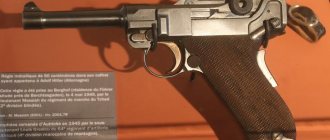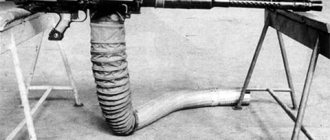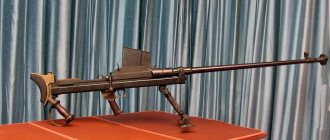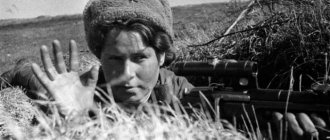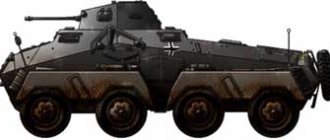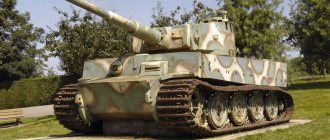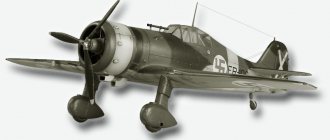German pistols have always been famous for their quality, reliability and innovation. The German gun industry was particularly distinguished in the field of short-barreled firearms, where Germany was almost always one step ahead of the competition, and many of the new designs that the Germans invented became the basis for most pistols of the 20th century. Let's talk in more detail about the most iconic German pistols.
We also recommend reading our selection of the best pistols in the world.
Luger Parabellum P08
The Parabellum, commonly known as the Luger pistol, is a semi-automatic self-loading pistol patented by Georg Luger in 1898 and manufactured by Deutsche Waffen und Munitionsfabriken (DWM) beginning in 1901 and ending in 1942. The Parabellum pistol had an unusually designed bolt, but , in fact, performed the same function as on modern samples.
Modifications:
- Luger Parabellum M1906
- Navy Luger Parabellum M1904
- Die Lange Pistole 1908 LP 08
Mauser pistols
Mauser C78 Zig-Zag
The Mauser C78, better known as the “Zigzag,” is a single-action trigger revolver developed by the German company Mauser. C78 Zigzag gets its name from the pattern on the side of the drum.
The Zigzag was originally designed with a solid frame, with the cylinder detachable from it for reloading. The cylinder itself was distinguished by a characteristic zigzag pattern, which played an important role in the trigger mechanism: the cylinder rotated when the hammer was cocked by a pin inside the frame, which caused it to rotate, repeating the zigzag pattern on the cylinder.
Mauser M1910
Pistols like the Mauser 1910 are simple blowback pistols with a fixed but easily removable barrel. The barrel is held to the frame by a long pin that passes through two lugs under the barrel (one at the front and one under the breech).
The action of this pistol has a distinctive open barrel appearance and a separate ejection window on the right side. The trigger mechanism is single action, hammer type. The weapon is equipped with a manual safety located in a slot in the left grip just behind the trigger.
The product is equipped with a slide stop device, but once the slide is opened, it can only be released by inserting a new magazine. The magazine release button is located at the base of the pistol grip. Sights are fixed. Grip panels are usually made of wood, but on later production weapons may also be made of plastic.
Modifications:
- Mauser 1914
- Mauser 1934
Mauser C96
The German World War II Mauser C96 (Construktion 96) pistol was one of the first semi-automatic pistols to become widely used. It was produced from 1896 to 1937 in Germany. The weapon's magazine had an unusual location - in front of the trigger.
Modifications:
- Mauser Cone Hammer
- Mauser C96 Bolo
- Mauser C96 Model 712
- Mauser Model 1930
Mauser WTP
The WTP is a simple blowback weapon with some interesting design features. The weapon has a rotary extractor, which is essentially a piece of spring steel, with the back of the extractor locking a button on the rear of the slide. The weapon has an internal guard that prevents the weapon from being fired with the magazine detached.
This button serves as a sort of cocking indicator: touching the button will give the user an indication of whether the weapon is cocked. If the button can be pressed flush with the bolt, the weapon is uncocked, and if the weapon is cocked, the button will not budge even if the user presses it hard. This function is only available on the WTP I pistol.
Mauser H.S.C.
Mauser HСС is a compact short-barreled weapon with a blowback action. The barrel is separated from the frame by releasing the lock located inside the trigger guard. The firing pin is hidden inside the bolt except for a small protrusion that protrudes from underneath the bolt and allows the hammer to be cocked by hand.
The safety is installed on the bolt and, when turned on (lowered), moves the rear part of the firing pin out of reach of the trigger and blocks it. The overall shape of the pistol is streamlined and allows it to be carried concealed. The magazine latch is located at the bottom of the handle.
Walter pistols
Whalther 4
The Model 4 is a relatively simple weapon with a blowback design, a fixed barrel, an external extractor and a hidden hammer. Its most unusual feature is that (like its Model 3 predecessor) its extractor and cartridge ejection port are on the left.
The barrel acts as a guide for a concentric recoil spring, which is held in place by a bayonet-type boss covering the front of the barrel and a bushing at the rear that also serves to hold the spring.
As the bolt moves rearward, it forces the trigger down, disengaging it from the sear. The safety is a rotating lever that securely locks the hammer when cocked. Most safeties have a checkered notch for easy thumb grip. There is a screw on the back of the handle that adjusts the tension of the firing pin flat spring.
Walther P38
The Walther P38 is a German pistol originally adopted in 1938 for use by the German Army as a replacement for the German Luger during World War II. This is a fairly recognizable weapon, often appearing in films, television and video games set during World War II or even several decades later.
Walther P38K
Another, lesser-known variant is the P38K ("Kurz", or "short" in German). This version was created for some special users such as the KSK, the elite counter-terrorism unit of the German army. The product was designated P4 and was intended for concealed carry. The front sight was mounted on the bolt, unlike the full-size model.
Flare pistol Walther Leuchtpistole 28
The Leuchtpistole "flare pistol" is a rocket launcher of German origin developed before and during World War II.
Developed in 1926, the Leuchtpistole with a folding barrel was adopted in 1928 as the Model Heer 26 (Heer means "army" and 26 means 1926). The length of the barrel made them quite cumbersome to use, so later Leuchtpistole models had a shorter barrel.
Modifications:
- Walther Leuchtpistole Model 34
- Walther Leuchtpistole Model 42
- Dopellaufige Signal und Leuchtpistole (SLD) - double-barreled modification
Walther P.P.
Walter PP is a semi-automatic short-barreled weapon from the PP family.
Developed by Carl Walther WaffenFabric in Germany, it has a blowback design with a fixed barrel, usually made entirely of steel. Equipped with a double-action trigger, with an open trigger and a manual safety device mounted on the frame. The magazines are single, the magazine release button is usually located on the left side of the frame, just below the bolt. However, some PP pistols were made both before and after the war with a so-called "Eastern" magazine release button located on the heel of the grip.
Walther PP and PPK pistols are equipped with a loaded chamber indicator, which is a small pin that protrudes from the rear of the slide (above the hammer) when a round is in the chamber. This indicator is not available on models chambered in .22LR.
It should be noted that most PP and PPK pistols were produced in 7.65 mm (.32ACP), and the 9 mm Kurz (9x17, .380ACP) were made much later.
It was on the basis of Walther PP that the domestic PM was created
Modifications:
- Walther P.P.S.
- Walther PPK
- Walther PPK-S
- Walther PP Super 9×18 Ultra
Walther P22
The Walther P22 is a German-made weapon that feels similar to the Walther P99. Walther Industries calls it the “little brother of the P99.” It fires .22 Long Rifle Rimfire ammunition. For convenience when shooting, it has an adjustable trigger guard. It has a unique design in which the magazine presses the safety lever in the pistol's chamber so that the weapon cannot be fired without it.
Walther P88
The P88 is a semi-automatic pistol with a recoil mechanism and a locking barrel. It differs from previous Walther pistols, such as P38 / P1, P5, in that it had an automatic design of Browning (USA).
Locking is achieved by one massive protrusion on the barrel, which is fixed in the hole for resetting the bolt stop. The P88 trigger is very similar to the system in the Walther P5, but the P88 has an ambidextrous frame-mounted safety.
The pistol has the same internal safeties as the P5 (striker safety, disconnector). The P88 featured all-steel construction, with fixed sights and high-capacity double-stack magazines.
The P88 was a good pistol, but was too expensive, so Walther abandoned it in favor of the lighter and smaller P88 Compact.
Walther P5
The P5 is a German-made weapon released at the end of the Cold War. It was developed by Walther specifically for police use. For this reason, the design was kept as compact as possible and several safety devices were implemented at once. With the advent of polymer frame pistols, the P5 was no longer considered lightweight, and the 8-round magazine capacity is considered limited by today's standards.
The design was borrowed from the Walther P38 pistol of World War II. The P5 is a weapon based on a short recoil mechanism with a closed bolt. In the P5, the bolt locks the barrel, resulting in a different appearance than the P38. Innovative features such as an alloy frame and firing pin safety have been added. A single row magazine is used. The cartridges are ejected to the left, which is quite rare.
Walther P99
The Walther P99 is a semi-automatic pistol manufactured in Germany by Walther Sportwaffen.
The most “cinematic” military revolver
“Where is the tiger! I will tame him! Perhaps this is the very first movie in the USSR where the German Reichsrevolver M1879 was shown so well
Perhaps in the swampy Bengal, Where everything turns to dust, Perhaps in the mountains of the Transvaal, Perhaps in the Afghan mountains, At the black Sudanese wells, On the fast Burmese river - One day you will have the opportunity to Stand on the bloody sand. (Gordon Lindsay)
History of firearms.
Let's think, which revolver of those adopted for service at different times do we most often see in movies?
Sometimes this can be followed by a lot of interesting discoveries. Well, let's say, such a revolutionary film as “Lenin in 1918”. Which revolver appears most often on the screen? Revolver? No, not a revolver, but a Browning M1900 pistol. Kaplan shoots at Lenin with it, and all the security officers, including Vasily, run with him.
Well, what about such classics as “Wedding in Malinovka” or “White Sun of the Desert”? The latter is dominated by the Nagan and Mauser, but there is also something unusual there. As, indeed, in the epic film about Sherlock Holmes and Dr. Watson, with the klutz Lestrade, who in one of the episodes shows them his “weapons” from his back pocket.
Or GDR Indian films... Are the characters armed with anything other than a hard drive?
And so, if we look closely, we will see that the “American” dragoons in the Indian films of the DEFA studio, and in the same “White Sun...”, and even darling Popandopulo had the handle of some kind sticking out of his red little vests. a very strange revolver. That is, in European cinema, the Colt is by no means the most popular revolver, but there are others, for example, the Webley-Scott. And, again, even in “movies about Indians.”
But there is another revolver, which we also often see in our Soviet and German films, although not everyone knows what it is.
Well, I, like many, first saw this revolver in the movie “Striped Flight”. At first it belonged to a foreign tamer, whose white leggings were torn by our tiger. Then, as you know, a monkey became the owner of the revolver, and it brought fear to the ship’s crew.
Still from the movie "Striped Flight" with a Reichsrevolver M1879 in the paws of a monkey
And here's how she shoots it. Look at her paw...
Then there were “Wedding in Malinovka” (1967) and “White Sun...” (1969), where for some reason many of Abdullah’s bandits were armed with this revolver.
First bandit
The second bandit scares Vereshchagin with it...
The third bandit, and this one “revolver” in his right hand seemed not enough, and he took the M1879 in his left
But what is sticking out of Popandopulo’s left pocket? The same revolver. Apparently, our “film makers” considered it right to arm bad characters in their films with such revolvers.
What attracted them to this revolver?
Most likely, it was due to its large size and its appearance, since it was completely different from the well-known “revolver.”
By the way, it was probably precisely because of its size that they gave it to Lestrade. Because his frail appearance makes him look especially comical!
British police detective Lestrade with Reichsrevolver M1879 is, of course, something!
Well, the fate of this revolver (not just a movie one, but a real one, in combat) is also very interesting and quite worthy of being told about it here and now.
Reichsrevolver M1879
And it so happened that they adopted it into service in the German army in 1879, that is, later than in Russia the American Smith and Wesson.
The requirements for the revolver from the German military were very similar to the requirements of many others: “national design” and production, simplicity, both in production and maintenance, and, of course, “accurate and powerful combat.” The very word Reichsrevolver meant that this revolver was officially in service with the German army. It was the main personal weapon in the German armed forces until 1908, after which it began to be replaced by the Parabellum pistol.
Reichsrevolver M1879. Right view
Moreover, its creators managed to achieve everything that the military demanded of them.
But next to many other revolvers of those years, it looked somehow surprisingly conservative, was very bulky and, to top it all off, had a very uncomfortable handle. It is not clear why a ring thickening was made on his muzzle. Such barrels were known, for example, they stood on the “Queen Anne pistols” (which we have already talked about here) and called them “cannon barrels”. However, there was no meaning in this ring. But there was a certain meaning in the ring on the handle. A strong cord was inserted into it, with which the revolver clung to the ammunition, so as not to lose it in case of emergency.
Reichsrevolver M1879. Left view
The length of the Reichsrevolver model 1879 was 345 mm, with a barrel length of 181 mm. Despite its large size, it weighed 1.03 kg without ammunition, that is, less than one would expect.
The bore had four riflings that curled to the right. The 10.6x25mm R cartridge was, however, an almost exact copy in both size and power of the .44 Russian cartridge and had the same welt on the case. By the way, surprisingly, the 10.6 mm cartridges used in this revolver not only became standard for the German army at the end of the 19th century, but were also on sale until 1939.
Colt .32 1892 (top) and Reichsrevolver M1879
The frame of the revolver was one-piece, there was no extractor (the cartridges were knocked out with a special cleaning rod, stored separately from the revolver). But a detachable drum was provided. So, in principle, having shot one drum and having another loaded, reloading the M1879 was not so difficult. In any case, this could be done faster than reloading the same, and later, revolver.
A flag-type fuse was provided on the left side of the case. The trigger mechanism was single action. That is, this revolver could not fire by self-cocking. The rate of fire was six shots in 15–20 seconds. The initial bullet speed is 205 m/s. Sighting range – 50 m. Maximum range – 400 m. Drum capacity – six rounds.
Diagram of the Reichsrevolver M1879 revolver
All publications note the uncomfortable grip of this revolver. But... they decided to replace it only four years later.
Reichsrevolver M1883
In 1883, they decided to modernize the revolver and adopted it into service with the German army as the “Reichsrevolver M1883” (State Revolver Model 1883), also known as the “Reichs-Commissions-revolver Modell 1883”. In the army it was used as the personal weapon of German officers and also non-commissioned officers in the infantry, cavalry and field artillery. The revolver was more compact, just like the Smith and Wesson revolver of the 1880 model, adopted for service in Russia.
Model 1883
The barrel of the new revolver was made shorter and the “ring” was removed from it. A shorter barrel means worse accuracy of fire, but this drawback was eliminated by new rifling of the barrel. Finally, the shape of the handle was changed a little: it became both more curved and shorter. The shape of the frame and the location of the drum axis lock have been changed. Weight has become less: 920 grams.
Fuse
Finally, a model with a double-action trigger mechanism appeared, but it was considered a civilian model and was not officially in service with the army, although, it is clear that gentlemen officers immediately began to buy it as a personal weapon. The production of civilian samples was carried out not only in Germany, but also in Belgium.
Several manufacturers were involved in the production of the M1879 Reich revolver. Thus, approximately 70% of all revolvers produced were manufactured by a group of weapons factories in the city of Suhl.
This was the so-called Suhl consortium of arms manufacturers, consisting of companies such as Spangenberg & Sauer, VC Schilling & Cie and CG Haenel & Cie. They produced revolvers for Prussia, Bavaria and Saxony. For example, under a contract dated March 24, 1879, the consortium produced 41,000 revolvers for the cavalry, infantry and field artillery of the Prussian Army. Under the 1882 contract, another 9,000 revolvers were made specifically for Prussian cuirassiers.
On January 14, 1882, the consortium received another order from Bavaria for the production of 2,795 Reich revolvers, and then for another 428. On March 16, 1882, Saxony entered into its first contract with the Suhl consortium of arms manufacturers and placed an order for 2,000 revolvers. Another 2,200 revolvers were ordered by Saxony to Suhl manufacturers on February 28, 1883.
"Abadi Door"
Another manufacturer of M1879 revolvers for the German army was the oldest enterprise in Germany, Franz von Dreyse.
Back on March 24, 1879, Prussia entered into a contract with her for the production of 19,000 revolvers. On May 22, 1880, Bavaria ordered 545 revolvers from Dreyse.
Reich revolvers of the 1879 model, manufactured by the Dreyse company, are stamped on the surface of the frame in the form of the text: “Fv DREYSE / SŒMMERDA”, enclosed in an oval.
Interestingly, this company produced a revolver in a version with two triggers. The first one worked as a self-cocking device. But if it was not squeezed to the end, then the trigger was placed at half-cock, and then the shooter could, by pressing the second trigger, release it very smoothly, thereby increasing the accuracy of his shot. To better hold the revolver, like the Russian Smith and Wesson, a “spur” was provided on the trigger guard.
Drum
Interestingly, the German cuirassier regiments used the M1879 revolver until they were re-equipped with the carbine in 1888. Non-commissioned officers and trumpeters of cavalry regiments were armed with this revolver until the advent of the P08 Parabellum pistol. The Imperial Navy used the M1879 to arm ship crews, naval artillery, and coastal units until 1906, when the Navy began to be actively armed with the Navy Luger pistol. But even after this, the M1879 continued to be in service with various rear, support and service units, almost until the very end of the First World War. However, the last cases of use of this revolver took place back in 1945, when in Germany they were distributed to Volksturmists. Well, captured as trophies, they later migrated to Mosfilm and to the warehouses of the DEFA film studio.
"Abadi's door" is open...
Surprisingly, the heavier one than the Russian Smith and Wesson (1.03 kg weight of the German one versus 1.2 kg of the Russian one without cartridges) did not cause any special complaints about the heavy weight from German officers and soldiers. And even more so, they had no complaints about the reloading system. Whatever weapons they gave us, we will fight with them, apparently, that’s exactly what they thought when they looked at these weapons.
PS
The author and administration of the site express their gratitude to Alain Daubresse for the opportunity to use his photographs.
Heckler Koch
Heckler Koch HK4
The HK4 pistol was one of the first pistols to implement the idea of modularity. Each product can be configured for one of four main calibers with simple barrel, recoil spring and magazine changes. Many HK4 pistols were sold with caliber change kits, which included three additional barrels with springs and corresponding magazines.
The frame of the HK4 pistols was made of aluminum alloy, and the bolts were made of sheet steel. The double-action trigger mechanism and, in particular, the partially exposed hammer made this weapon similar in design to the Mauser HSC.
Heckler Koch P7
The Heckler & Koch P7 was first introduced in 1976. Heckler & Koch began the process of developing a new compact-sized autoloading pistol with improved safety features in 1971. After years of prototyping and experimentation, HK finally released the PSP. (“Polizei Selbstlade-Pistole” or “Police Self-Loading Pistol”). It was intended for use by the West German police and consequently the PSP was adopted by several police departments as well as border police units as the P7.
Operation of automatic pistol Heckler Koch P7
Modifications:
- Heckler Koch P8
- Heckler Koch P9
- Heckler Koch P10
- Heckler Koch P30
- Heckler Koch P2000
Heckler Koch Mark 23 – USP
The Heckler & Koch MK 23 Mod 0 (aka → USP) is a weapon system consisting of a semi-automatic pistol, a laser targeting module (LAM) and a silencer. It was adopted by the United States Special Operations Command (USSOCOM) for special operations units in the 1990s.
Modifications:
- USP Compact
- USP Tactical
- USP Expert
Bergman pistols
Bergmann 1896
Theodore Bergman pioneered the development of semi-automatic pistols in Europe in the late 1890s and early 1900s. Originally chambered in 5mm, 6.5mm and later 8mm, very few of these pistols were actually manufactured (about 2,500 in total) with even fewer examples surviving after World War II.
The Model 1896 Bergmann was an early semi-automatic pistol design. The Model 1896 was loaded using a clip similar to the Mannlicher M1895, loaded through a side opening. Early cartridges were not rifled and the bullets had a sharp nose to prevent jamming. Later pistols had mechanical extractors and cartridges with checkered flanges.
Of the three calibers available in the Bergman Model 1896 pistol, the 6.5mm No. 3 was the most popular. About 4,000 of these pistols were produced and they found followers all over the world.
Bergmann Simplex
Theodore Bergmann was persistent in his pursuit of a contract with the armed forces, but sales of the Bergmann model 1896 and 1897 pistols showed him that a single design could not effectively satisfy both the military need for a powerful cartridge and the civilian need for a small cartridge and a concealable pistol. . To capture both sides of the market, Bergmann divided his efforts, reducing and simplifying the design to the civilian Simplex and beefing it up for the military Bergmann Mars pistol.
To make the Simplex smaller and cheaper, the locking barrel system was abandoned in favor of a simple blowback mechanism coupled with a new 8mm cartridge. This cartridge featured an 18mm straight-walled case and a 71gr bullet, making it slightly less powerful than the .32ACP. Compared to the 8mm cartridge from the No. 4 Bergmann 1896, the Simplex cartridge is 4mm shorter. The Simplex will not be able to shoot longer cartridges, but it is likely that the No. 4 pistol can shoot short Simplex cartridges.
Pistol automatic operation
Bergmann Mars
The Bergmann Bayard Model 1910 is a short recoil weapon. It uses a short recoil system in which a separate bolt moves inside a rectangular barrel extension. The bolt protrudes from the barrel extension at the rear and has two round handles for manual release.
The bolt is locked by a vertically sliding block located in the barrel extension. In the forward position of the moving parts, the locking block is moved upward by a step in the frame and fits into a slot made on the underside of the bolt, securely fixing it to the barrel extension. When recoil occurs, the tilt in the frame allows the block to move down slightly and out of the notch in the bolt, thereby unlocking the bolt.
Feeding is carried out from detachable box magazines in which cartridges are held in two vertical rows in a checkerboard pattern. Magazines can be reloaded either in a detached state or inside the pistol, using clips through the ejection port at the top (with the bolt locked). The magazine body is located in front of the trigger guard. The magazine release is located inside the trigger guard, at the front.
The trigger mechanism is single action, with an open hammer and a manual safety located to the left of the hammer. To engage the safety, this lever must be rotated up and forward.
MG-34
The main firepower of the squad was provided by a light machine gun. In the Wehrmacht it was the MG-34, which was produced in Switzerland even before the war, since Germany could not develop weapons itself.
The machine gun turned out to be quite reliable and of high quality. Tape feeding was a noticeable advantage compared to DP-47 disks. The kit included a spare barrel, which made it possible to change it directly in battle without much effort.
Wehrmacht machine gun crew
However, like any type of weapon, this machine gun had its drawbacks. Firstly, due to insufficient cooling, the barrel overheated too much. Secondly, the belt feeding, when the belt was skewed, stopped completely. Thirdly, the machine gun was supplied to the troops along with a machine tool, which in total produced 31 kilograms. This is a lot for a light machine gun.
Pistols from other manufacturers
Reichsrevolver 1879
The Reichsrevolver was a service revolver used by the German Army from 1879 to 1908. This is a one-piece revolver with a single-action trigger chambered for the 10.6 mm cartridge. It had a loading port on the right side, and the cylinder could be detached by moving the hammer to half cock.
Removing spent cartridges could be accomplished by removing the cylinder and removing the axle pin, then removing the empty cartridges by hand. Although the revolver's design was outdated, especially compared to the semi-automatic Luger pistol that replaced it, it was still popular due to its durability, and some revolvers even managed to see service in World War I.
Modifications:
- Reichsrevolver 1883
Borchardt C93
The Borchardt C93 ("Construktion 1893") was a German pistol designed by Hugo Borchardt. It was one of the first working self-loading pistols in history. Although it was not commercially successful in its time, Borchardt's design is directly related to the development of the extremely popular Luger pistol.
The C93 used a lever lock based on the mechanism used in the Maxim pistol that was being developed at the time. When the weapon is fired, a two-part lever rises and flexes as the gun recoils, allowing the bolt to unlock and release the spent cartridge.
Ammunition is supplied from a detachable eight-round box magazine, which is inserted into the handle from below. The C93 was produced and sold primarily in the proprietary 7.65x25mm Borchardt caliber, however, some prototype weapons were chambered in the 9x18mm Borchardt cartridge.
Automatic operation of the Borchardt C93 pistol
Schwarzlose M1898
Schwarzlose is the name most associated with the M1907 light machine gun, which was used by the Austro-Hungarian Army (World War I). However, in 1898, Andreas Wilhelm Schwarzlose invented a truly advanced pistol design, significantly ahead of his contemporaries in design and ergonomics.
Schwarzlose himself was a Prussian, having served in his youth as a marksman and gunsmith in the Austro-Hungarian army before studying at the National Artillery College and founding his own company, AW Schwarzlose GmbH in Berlin in 1897. While his early pistol designs were not very popular, his Model 1908 weapon had some success, but his greatest breakthrough was the M1907 machine gun, adopted by the Austro-Hungarian Army.
Schwarzlose filed his first patent for the design in Great Britain in 1898, and his U.S. patent was granted in 1902, when production began in Berlin. The design evolved between two patents: the first showed a small bolt handle on the left side of the bolt, which was later replaced by a T-bar charging handle.
Dreyse M1907
The 1907 Dreyse was manufactured by Rheinische Metallwaren & Maschinenfabrik (RM&M), which was later renamed Rheinmetall. The product was designed by Louis Schmeisser and manufactured by RM&M under the Dreyse brand.
The Model 1907 was a hammer-fired pocket pistol chambered in .32 ACP/7.65mm Browning chambered from a 7-round, single-stack magazine. Introduced in 1907, but did not enter significant production until 1908. Production ceased in 1918, when approximately 250,000 had been produced. The 1907 Dreyse was patented on February 21, 1908 by Rheinische Metallwaaren & Machinenfabrik. The creation of the pistol has long been credited to Louis Schmeisser, although his name does not appear on the patent. The patent does not show the hinged upper receiver and barrel - in fact, the design of the bolt and front bushing is patented.
However, another RM&M patent, German Patent 185411 dated January 4, 1906, shows a weapon with a barrel that can be folded upward and which is very similar to the Bergmann Simplex, a weapon also attributed to Louis Schmeisser.
Operation of automatic pistol Dreyse M1907
Sauer Model 13
Sauer 1913 - Produced by JP Sauer & Sohn from 1913-1929. The improved Model 13 appeared in 1926 as the 1926 export model. Although the Model 13 was not adopted by any military or government service, it was popular among German officers during both World Wars.
In 1930, the Model 1913 was redesigned and the new product was released as the Model 1930. It had a more ergonomic handle, better balance, and several other features that set it apart from its predecessor. Soon after this, Sauer began to make further improvements, and in October 1930 the Beherdenmodell 1930 appeared, which was aimed at government customers. This model had interesting features such as a trigger safety similar to a modern Glock. But Walther PP and PPK were serious competitors.
Sauer 38H
The Sauer 38H is a blowback weapon with a fixed barrel. The product is characterized by a separate bolt, which contains: an extractor, a firing pin and a loaded chamber indicator (which protrudes from the back of the bolt if a cartridge is in the chamber).
The takedown latch is located inside the trigger guard, just forward of the trigger, and must be pulled down to allow the bolt to be removed. The Sauer 38H has a double action trigger with a hidden hammer and a sliding manual safety that locks the hammer. Additional safety (and flexibility in choosing the firing mode) is provided by the cocking/releasing lever located on the left side of the frame under the grip panel.
If the hammer is cocked, pressing this lever releases the hammer safely; if the hammer is released, pressing the lever will cock it for the first shot in single action.
The magazine release latch is controlled by a button located on the left side of the handle, at the base of the trigger guard. Sights are fixed. The handle panels are made of black plastic with the Sauer double S logo on the left handle.
Korth combat
Korth pistols were designed around 1982 by renowned German gunsmith Willy Korth, who had been known as a maker of fine custom revolvers since the mid-1960s. The first "production" Korth pistols appeared in 1985, and since then they have been produced in very limited quantities.
These pistols are high quality, custom made European guns. Each pistol is manufactured using up to 70% hand labor and hand fitting. Korth pistols are available in a variety of calibers and finishes.
Why do you need a gun?
The production of short-barreled weapons - pistols, later revolvers, which can be used with ease and convenience with one hand, to equip the armed forces is not a new idea. The first pistols were matchlock. With the advent of wheel-type, percussion-flint, capsule samples of the design of ignition of a powder charge, they became more common, although due to the complexity and labor-intensive manufacturing they were quite expensive weapons, used mainly as follows:
- The weapon of cavalrymen who were uncomfortable using long guns in short-lived battles. However, such pistols were distinguished by a longer barrel length to increase the range of hitting the target. The great weight was compensated by the fact that it was not the rider who had to carry and carry the cavalry pistol.
- Noble weapons, including dueling weapons. Such pistols were distinguished by both high quality, shooting accuracy, and expensive finishing that turned them into works of art.
- Officer's weapon.
These pistols were smooth-bore, single-shot, and often misfired when firing, so for reliability and insurance in combat conditions, they tried to have two copies with them. Only in the middle of the 19th century did cartridge revolvers with a rifled barrel appear, allowing several accurate shots to be fired without reloading. Having such advantages, they never forced pistols out of history, despite the cult appeal, largely introduced into the consciousness later by American Westerns.
Since the end of the 19th century, weapons designers from different countries have been developing a self-loading pistol, also called an automatic pistol. The first production pistol of this type in history to enter service with the cavalry forces of Austria-Hungary was the Roth-Steyr M1907:
- The operating principle is automatic with a movable barrel.
- Caliber – 8 mm, cartridge – 8 x 19 mm.
- Barrel length – 128 mm.
- Magazine – 10 rounds.
- Weight – 0.99 kg.
- Produced from 1907 to 1914.
- About 100 thousand copies were produced.
- In World War II it was in service with Italian units.
The first successful example showed other countries the opportunity to arm their officers, junior officers, pilots, and tank crews with weapons that have many advantages over rifles:
- Small size and weight, which allows you to carry a pistol for a long time without fatigue in a holster on your belt, from which you can quickly take it out, and does not interfere in cramped conditions - in a car, the cockpit of an airplane, tank, or other equipment.
- Ease of handling, low inertia during use, compared to two-handed weapons.
- Due to its low mass, it can be carried as a second, auxiliary weapon.
Experience of use in the First World War confirmed initial impressions and assumptions. It was convenient to shoot from a pistol in close combat, inside buildings, indoors, including moving up stairs, moving through bushes, dense forests, and to be worn secretly under clothing. Although pistols were inferior to rifles in terms of firepower, they were in many cases superior to them in effectiveness in battle, often making them indispensable.
German and Austrian weapon designers, we must give them their due, put a lot of effort and talent so that the pistols they created, and later the German machine guns of World War II, received worldwide recognition as reliable, effective weapons. By the way, one of their technical solutions back in the 30s of the 19th century was to increase the capacity of a replaceable extended magazine from 6 - 8 rounds to 12 - 20, which is also used in modern weapons.
Use of captured German pistols in the Red Army
During the Great Patriotic War, German pistols and revolvers were very desirable weapons for Red Army soldiers, and there was one simple reason for this. In the Red Army, the pistol was considered the weapon of commanders, pilots and tank crews, and was not widely distributed. Taking a captured short-barreled weapon greatly facilitated combat in a confined space: in a trench or building.
Also, German weapons were often used as gifts, usually from soldiers to commanders.
The choice of captured weapons was determined only by the fact of their availability, that is, they took what they had. The soldiers of the army of the Third Reich had many different units of short-barreled weapons and a larger number of personnel were armed with them. Here are just some of the models:
- Walther P.P.
- Walther PPK
- Walther P38
- Luger P08
- Mauser C96
- Sauer 1913
Particularly noteworthy here is the Mauser C96, which can be called the most desirable on the list among Red Army soldiers.
Post-war use of German pistols
The range of captured weapons during the Second World War completely coincides with those that were used in the post-war period, but the purpose has changed.
A huge part of the so-called echo of war fell into the hands of bandits and killers, many samples entered service with the MGB and the NKVD. Compact pistols such as the Walther PP and PPK had no alternative and were in great demand until the 1960s, when they were replaced by the Soviet Makarov pistol.
Captured pistols from Germany are still on the list of award weapons. The population has more than 20,000 units of award trophy pistols in their hands.
MP 38/40
The same famous MP-40 that we most often see in films about the war. In fact, only officers, tank crews or paratroopers were armed with them. Not every German soldier during the war years had the opportunity to hold it in his hands.
In various sources, this PP is often called “Schmeisser”, linking its creation with the German designer Hugo Schmeisser. In reality, it was invented by Heinrich Vollmer a year before the start of World War II.
The 9-mm cartridge had a good stopping effect, and the low rate of fire allowed for accurate targeted shooting. Such PP was loved by Soviet intelligence officers because it was lighter and more compact than the PPSh-41.
MP 38 submachine gun during testing
Overall, the MP-40 was not bad, but had a number of shortcomings. These include the flimsiness of the design, the weak penetration ability of the cartridge and the absence of a “single shot” mode.
